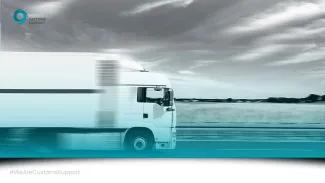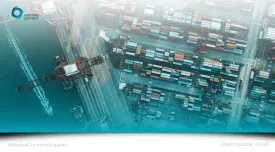What is GVMS?
The Goods Vehicle Movement Service (GVMS) is a system that import and export clearances are uploaded to when goods are moving by road between the UK and the EU.
GVMS is operated by the haulier, who submits details of the cargo for each declaration the vehicle is carrying. The GVMS requires one or more unique reference numbers to work effectively. These reference numbers may include:
- Transit Accompanying Document MRNs for goods moving via Transit.
- ERNs for goods declared into CHIEF.
- MRNs for goods declared into CDS.
- DUCR for goods declared for export into CHIEF/CDS.
- An EORI for goods where the trader is authorised to make declarations in their own records.
- ATA Carnet numbers.
- TIR Carnet numbers.
The haulier is then provided with a Goods Movement Reference (GMR), which works like a Unique Consignment Number (UCN). The driver is required to scan each of the GMRs received by the haulier in order to board the ferry (drivers are not allowed to board the ferry without a GMR).
Once the ferry embarks, all the declarations attached to the GMRs onboard will process. All of the declarations are completed beforehand, so they are at the pre-notification stage until this stage.
Any queries, holds and inspections will occur during the processing of the live import entry after embarking. In these cases, the driver will be informed, and the vehicle will report to an Inland Border Facility (IBF) on arrival, awaiting full clearance before continuing.
Where can it go wrong?
There are various ways that completed GMRs can be flagged for errors:
Improper document scanning
All documents, for all declarations, must be uploaded to GVMS. If there are documents missing or they do not clearly tie up with the declarations, then the GMR can be flagged for further inspection.
As the haulier who uploads the documents, ensure that each declaration has the supporting paperwork with it and that the docs are in order to reduce any confusion. Generally, it is best to upload in the following order:
- Customs declaration + pre-notification advice.
- Commercial invoice.
- Packing List (may be combined with the commercial invoice)
- Movement certificate (CMR)
- Preference certificate or proof of origin (if applicable)
- Additional licences or supporting documentation (if applicable)
This way, you can ensure that the documents are clearly included and matched up with each declaration when you are uploading to GVMS.
Noncompliant declarations
If your declaration has not been completed correctly, even if it has been accepted by the customs system, then this can raise a query and hold whilst the authorities investigate the issue.
Although it is not the haulier’s role to proof declarations, quick communication of the issue to the relevant parties is essential to prevent further delay.
Delays for payment of taxes
If the importer has not opted for payment by deferment, or they haven’t been proactive in transferring the money to customs for that shipment, then the goods will not be allowed to proceed inland until the monies have been received and allocated by customs.
Again, quick communication of the issue to the relevant parties is essential to prevent further delay.
Consolidation risks
These problems can occur for a single pair of export and import clearances, but a consolidated load brings even more risk of error as there are multiple declarations. Sometimes, there are multiple importers and exporters, and there can also be multiple customs brokers on both sides.
All it takes is for one mistake to be made and the whole vehicle will be held until the queries are resolved and the taxes are collected.
How to reduce your risk when consolidating
When you are importing multiple loads on a single vehicle, or a part-load, ask your supplier, buyer, or haulier about who does their clearances. Many haulage companies rely on the exporters and importers to send them the clearances, and many importers and exporters only do the clearances for their side of the movement.
Customs Support provides services across Europe, with over 1500 declarants in more than 100 offices. Although we do not process GVMS administration, we do provide end-to-end clearances for importers, exporters, and hauliers who rely on us to provide correct and complete paperwork, keeping their goods and vehicles moving with as few delays as possible.
If you are experiencing delays in EU/UK road freight clearance due to customs complications, contact us to discuss how we can help your supply chain today.













